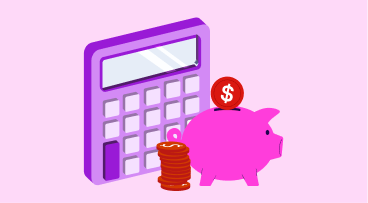
Savings accounts
Boost your savings with Westpac
- Bonus interest every month you grow your savings even if you withdraw money¹
- No monthly fees or transfer fees – with no transactional fees on kids accounts²
- Options for short- and long-term savings with special introductory rates
Bonus interest for regular savers of up to 5.00% p.a.
Aged 18-29?
You could earn up to 5.20% p.a. variable interest on your first $30,000 savings with a Life Savings and Choice bank account.
Competitive rates for short- and long-term saving options

Calculate what you could earn on your savings
Estimate how much you’ll need to put away each month for the things you want, from your starting balance to how long it may take to reach your goal.
Frequently asked questions
A savings account is a type of bank account where you can deposit your money and earn interest on the balance. It's designed to help you save money over time while keeping your funds accessible for when you need them. With a savings account, you can make deposits, receive transfers from other people or banks, and grow your savings through the interest earned on your balance. There are a few types of savings accounts, each with its own features and benefits to suit different savings goals and preferences.
Help when you need it
Things you should know
* Total variable interest: total variable interest consists of two parts: Westpac Life variable interest and Spend&Save bonus variable interest. To earn the total variable interest, you must meet the criteria for both parts.
- You must be aged 18-29 with a Westpac Life and a Westpac Choice account. Joint accounts are not eligible.
- If you have multiple Westpac Life accounts, only the earliest opened account is eligible for bonus interest qualification.
- You must make 5 eligible purchases with the debit card linked to your Westpac Choice account and have these settled (not pending) by 11:59PM AEST on the second last business day within a calendar month. The following transactions are ineligible: ATM transactions, PayID, BPAY, EFTPOS cash-out only transactions, direct debits and paying off a credit card account.
- For bonus interest qualification, a month is the period from close of business on the last business day of the prior month to close of business on the last business day of the current month. Bonus interest is calculated on the daily balance of your eligible Westpac Life account up to $30,000, and recorded as paid into your eligible Westpac Life account on the last business day of the month.
- Only one Spend&Save bonus variable interest offer per customer.
- The bonus interest will appear on your Life account statement as “INTEREST PAID – PROMOTIONAL". It will also appear in Online Banking and the Westpac App in the Account details section for your Westpac Life account as “Promotional rate”.
- Offer may be varied or withdrawn at any time in accordance with the Deposit accounts for Personal customers Terms and Conditions. (PDF 622KB)
a. your account balance has not fallen below $0; and
b. you (or someone on your behalf) have made a deposit of any amount (interest paid into your account does not qualify as a deposit in terms of bonus interest eligibility); and
c. the account balance on the last business day of the month is higher than the account balance on the last business day of the previous month.
Note: Bonus interest is calculated in the system after 11:59pm on the last business day of the month. Any transaction processed before 11:59pm may impact bonus interest eligibility.
2. Westpac everyday account: To open a Westpac Life account, customers must hold a Westpac everyday account in the same name and be registered for Online and Phone Banking. To open a Westpac Bump Savings account, customers must hold a Westpac everyday account, which can be in the name of the child or a parent signatory. Fees and charges may apply on the everyday account.
3. eSaver: If you have not had a Westpac eSaver account before, a total introductory rate of 5.00% p.a. for the first 5 months applies. After 5 months the standard variable rate will apply. The total introductory rate of 5.00% p.a. is a combination of an introductory fixed interest rate of 3.55% p.a. and an online bonus rate of 0.35% p.a. on top of the standard variable rate, currently 1.10% p.a. Online bonus offer available from 17/11/2023 for a limited time only. Existing or previous eSaver account holders are not eligible for this offer. Joint accounts are eligible where the primary account holder has not held an eSaver account before.






